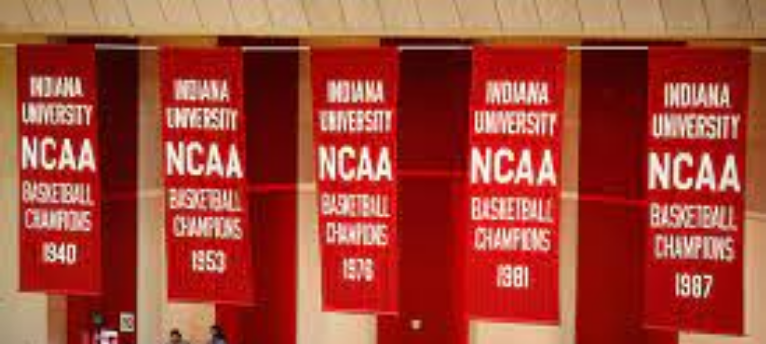
Indiana University
Bloomington , Indiana , United States
- Founded: 1820
- Establishment: University
- Type: Public
- Total Students: 45328
Indiana University
Indiana University Bloomington (IU Bloomington, Indiana University, IU, or simply Indiana) is a public research university in Bloomington, Indiana. It is the flagship campus of Indiana University and its largest campus with over 40,000 students. Established as the state's seminary in 1820, the name was changed to "Indiana College" in 1829 and to "Indiana University" in 1838.
Indiana University is a member of the Association of American Universities and is classified among "R1: Doctoral Universities – Very high research activity". Its schools and programs include the Jacobs School of Music, Kelley School of Business, School of Education, Luddy School of Informatics, O'Neill School of Public and Environmental Affairs, School of Public Health, School of Medicine, School of Nursing, Hutton Honors College, and Maurer School of Law. The campus also features the Lilly Library, Eskenazi Museum of Art, and the Indiana Memorial Union.
Indiana athletic teams compete in Division I of the NCAA and are known as the Indiana Hoosiers. The university is a member of the Big Ten Conference. Since it does not have a mascot, all teams are known simply as "Hoosiers." The Indiana Hoosiers have won 24 NCAA national championships and one Association for Intercollegiate Athletics for Women (AIAW) national championship, in addition to 145 NCAA individual national championships. Titles won by teams include eight by the Hoosiers men's soccer team, a record-setting six straight in men's swimming and diving, five by the Hoosiers men's basketball team, three in men's cross country, one in men's track and field, and one in wrestling.
Indiana's state government in Corydon established Indiana University on January 20, 1820, as the "State Seminary." Construction began in 1822 at what is now called Seminary Square Park near the intersection of Second Street and College Avenue. Classes began on April 4, 1825. The first professor was Baynard Rush Hall, a Presbyterian minister who taught all of the classes in 1825–27. In the first year, he taught twelve students and was paid $250. Hall was a classicist who focused on Greek and Latin and believed that the study of classical philosophy and languages formed the basis of the best education. The first class graduated in 1830. From 1820 to 1889 a legal-political battle was fought between IU and Vincennes University as to which was the legitimate state university.
In 1829, Andrew Wylie became the first president, serving until his death in 1851. The school's name was changed to "Indiana College" in 1829, and to "Indiana University" in 1838. Wylie and David Maxwell, president of the board of trustees, were devout Presbyterians. They spoke of the nonsectarian status of the school but generally hired fellow Presbyterians. Presidents and professors were expected to set a moral example for their charges. After six ministers in a row, the first non-clergyman to become president was the young biology professor David Starr Jordan, in 1885. Jordan followed Baptist theologian Lemuel Moss, who resigned after a scandal broke regarding his involvement with a female professor.
Jordan (president 1884–1891) improved the university's finances and public image, doubled its enrollment, and instituted an elective system along the lines of his alma mater, Cornell University. Jordan became president of Stanford University in June 1891.
The growth of the institution was slow. In 1851, IU had nearly a hundred students and seven professors. IU admitted its first woman student, Sarah Parke Morrison, in 1867, making IU the fourth public university to admit women on an equal basis with men.Morrison went on to become the first female professor at IU in 1873.
Mathematician Joseph Swain was IU's first Hoosier-born president, 1893 to 1902. He established Kirkwood Hall in 1894; a gymnasium for men in 1896, which later was named Assembly Hall; and Kirkwood Observatory in 1900. He began construction for Science Hall in 1901. During his presidency, student enrollment increased from 524 to 1,285.
In 1883, IU awarded its first PhD and played its first intercollegiate sport (baseball), prefiguring the school's future status as a major research institution and a power in collegiate athletics. But another incident that year was of more immediate concern: the original campus in Seminary Square burned to the ground. The college was rebuilt between 1884 and 1908 at the far eastern edge of Bloomington. (Today, the city has expanded eastward, and the "new" campus is once again in the midst of the city.) One challenge was that Bloomington's limited water supply was inadequate for its population of 12,000 and could not handle university expansion. The university commissioned a study that led to building a reservoir for its use.
In 1902, IU enrolled 1203 undergraduates; all but 65 were Hoosiers. There were 82 graduate students including ten from out-of-state. The curriculum emphasized the classics, as befitted a gentleman, and stood in contrast to the service-oriented curriculum at Purdue University, which presented itself as of direct benefit to farmers, industrialists, and businessmen.
The first extension office of IU was opened in Indianapolis in 1916. In 1920/1921 the School of Music and the School of Commerce and Finance (what later became the Kelley School of Business) were opened. In the 1940s Indiana University opened extension campuses in Kokomo and Fort Wayne. The Kinsey Institute for sexual research was established in 1945.
During the Great Depression, Indiana University fared much better than most state schools thanks to the entrepreneurship of its young president Herman Wells. He collaborated with Frederick L. Hovde, the president of Purdue; together they approached the Indiana delegation to Congress, indicating their highest priorities. For Wells, it was to build a world-class music school, replacing dilapidated facilities. As a result of these efforts, the Works Progress Administration (WPA) built one of the finest facilities in the country. He added matching funds from the state legislature and opened a full-scale fund-raising campaign among alumni and the business community. In 1942, Wells reported that "The past five years have been the greatest single period of expansion in the physical plant of the University in its entire history. In this period 15 new buildings have been constructed.
In 1960, the IU student body elected Thomas Atkins, an African-American from Elkhart, Indiana, to the position of president of the student body. A throng of white students protested the result by parading around campus waving Confederate flags and allegedly blamed Atkins' victory on a "bunch of beatniks." When the protesters approached the female dormitory on campus, they were met with "a barrage of cosmetic bottles, old shoes, and other objects."
Important Facts
BLOOMINGTON, Ind. -- In advance of Indiana University's appearance in the 2016 Foster Farms Bowl on Dec. 28, playing the University of Utah, here are some behind-the-scenes facts about the Hoosiers.
1. Founded in 1820, Indiana University is one of the United States’ top public universities. With more than 114,000 students and 9,200 faculty on eight campuses, IU is also one of the largest institutions of higher education in the United States. Its annual budget for all eight campuses totals over $3 billion. Each one of the eight IU campuses is an accredited, four-year degree-granting institution. The largest and oldest IU campus is in Bloomington.
2. IU faculty have been awarded every major national and international prize including the Nobel Prize, Pulitzer Prize, Oscar Award and Emmy Award, as well as major research grants from the National Science, Ford, Guggenheim, Rockefeller and MacArthur foundations. The late IU Distinguished Professor Elinor Ostrom became the first female recipient of the Nobel Prize for Economics in 2009.
3. IU will be well represented at the Foster Farms Bowl, as over 26,260 proud Hoosier alumni live in California. Nearly 9,500 Hoosier alums reside in the San Francisco Bay area, including Sacramento. Over 13,375 IU alumni live within 300 miles of Santa Clara. Prominent IU Bloomington alumni now making a name for themselves in northern California include Thomas Ehrlich, former Indiana University president (1987-1994); Todd Spaletto, president of The North Face Americas; WordPress founder Tony Conrad; Jean Ann Ford and Jane Ford-Petrin, co-founders of Benefit Cosmetics; David Krane, general partner at Google Ventures; and Louis Jordan, owner of Tympany Vineyards, former senior vice president for Starbucks Coffee Co. and former CFO for Global Retail at Nike.
4. IU alumni who have distinguished themselves in sports include George Taliaferro, an All-American football player who led the Hoosiers to their only undefeated championship and the first African-American to be drafted by the National Football League; and California native Mark Spitz, competitive swimmer and nine-time Olympic gold medalist in 1968 and 1972.
5. Indiana University Research and Technology Corp., which protects, markets and licenses intellectual property developed at IU so it can be commercialized by industry, was issued a record 53 U.S. patents and 112 global patents in FY 2016. It also completed 46 licensing agreements, received 150 invention disclosures from faculty and filed 326 global patent applications. IURTC has licensed 17 technologies to four companies in the Silicon Valley area.
6. IU is a leader in the areas of supercomputing and data networking, with multiple National Science Foundation-funded projects that support large-scale, high-speed data connections between research institutions in North America, Europe, Asia and Africa. The university also provides operational support to the Department of Energy’s efforts to coordinate supercomputing resources to advance research in high-energy physics, nanoscience and structural biology. IU is also home to one of the country’s premier high-performing supercomputers, Big Red II.
7. Back-to-back bowl appearances -- The Hoosiers will be making their 11th bowl appearance, their second consecutive and their first at the Foster Farms Bowl. IU last made back-to-back postseason appearances in 1990-91.
8. Reuters' “Most Innovative Universities” list ranks IU 37th worldwide and 25th among U.S. universities in the most recent list, which was released in September. IU's academic programs are consistently ranked among the top 10 in the nation: The Kelley School of Business is one of the most respected business schools in the world. Graduate programs at IU's School of Public and Environmental Affairs in Bloomington rank No. 1 in U.S. News & World Report's Best Graduate Schools. The Bloomington campus's IU Maurer School of Law is ranked in the top 25 overall by U.S. News & World Report, eighth among public universities with five research centers and several acclaimed programs. The IU Jacobs School of Music is one of the best schools of music in the world, with top-ranked opera, theater and jazz studies programs and graduates performing and teaching around the world.
9. In June 2016, IU announced Precision Health Initiative, a research initiative focused on patient-centered precision medicine therapies, as the first recipient of funding under the university’s new $300 million Grand Challenges Program. The Precision Health Initiative will develop IU's expertise in individualized precision medicine and will seek to seek to cure at least one cancer and one childhood disease, as well as find ways to prevent one chronic illness and one neurodegenerative disease.
10. Indiana and Utah will meet for the first time since 2002. In its previous matchups, IU earned a victory in 1975, while the Utes collected wins in 2001 and 2002. The Hoosiers have played two postseason games in the state of California. Indiana defeated BYU (38-37) in the 1979 Holiday Bowl and fell to USC (14-3) in the 1968 Rose Bowl.
Features
-
Ranking: N/A

-
Ranking: N/A

- Type of Accommodation: On Campus
Financials
Marketing Material
Contact Information
- 107 S Indiana Ave, Bloomington, IN 47405, United States
- To know more contact PSA toll free number 18002585772
Programs Offered
Bachelor of Science in Business (Advertising)
- Length 04 Year
- Total Tuition Fee 161920 USD
- Application Fee 65 USD
- Average processing time 20 days

